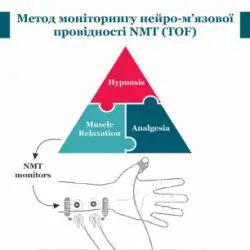Stages of processing and disinfection of flexible endoscopes. Stage 1: primary cleaning of the endoscope.
27 May 2022This stage is carried out in the
procedure room immediately after the study, before disconnecting the device from the
illuminator, aspirator and video processor. It is very important to clean and rinse immediately after
procedure, clean and rinse the endoscope, inside and out, to prevent drying
and seal contaminants.
Algorithm of actions:
1. With smooth movements, from the
from the handle of the endoscope to the distal needle,
wipe the flexible part with a lint-free cloth moistened with a solution of detergent (hereinafter referred to as "D.O.";
2. Aspiration channels and
air/water channels: distal needle
into a beaker with fresh saline solution (200 ml).
Aspirate the liquid and air alternately, ending the manipulation by blowing
the manipulation with air. For thorough processing of the endoscope, it is recommended to replace the air/water valve with a flushing valve, with
with this valve, simultaneously through the water and air channels, a double
air/water flow into the distal nozzle flushing head. This is the thinnest
part of the structure, so it is important to flush the nozzle thoroughly to prevent it from
blockage. Such a valve is included as a standard part of every
Important! If a different solution was used at the end of cleaning
composition, then rinse these channels with water for 10 seconds to avoid
3. C analyses are washed with water and purged according to the instructions from the
4. The endoscope is disconnected from
equipment (illuminator, aspirator, and video processor), disconnect the valves, and
if you have a video endoscope, put a protective cap on the connector.
5. To move the device to the
"dirty zone", place it in a container/tray and cover it with a lid.
Tightness test
It is necessary to visually inspect the endoscope for damage and determine its tightness according to the according to the method described in the instructions of the device manufacturer. This stage is very important, since during the inspection it is possible to prevent breakage in advance and avoid getting detergents on it (flooding) during further DVU, which can lead to repair at half the cost of the endoscope. Testing is performed manually, regardless of the availability of this option in the reprocessor."
Important! Iif the endoscope is leaky, it will be poorly disinfected and will become a carrier of infection. Also, such an endoscope can cause damage to the patient electric shock to the patientorto the doctor, if electrosurgical instruments are used during treatment.
-
![Article]() NMT neuromuscular conductance monitoring method (TOF)20 July 2023
NMT neuromuscular conductance monitoring method (TOF)20 July 2023 -
![Article]() HARWIND is a company that always carefully selects partners for cooperation!19 April 2022Our priority is decent, reliable partners who profess universal values. This difficult time has revealed the true meaning of the term "partnership". We constantly receive moral support from our suppliers, and our government provides financial support
HARWIND is a company that always carefully selects partners for cooperation!19 April 2022Our priority is decent, reliable partners who profess universal values. This difficult time has revealed the true meaning of the term "partnership". We constantly receive moral support from our suppliers, and our government provides financial support



